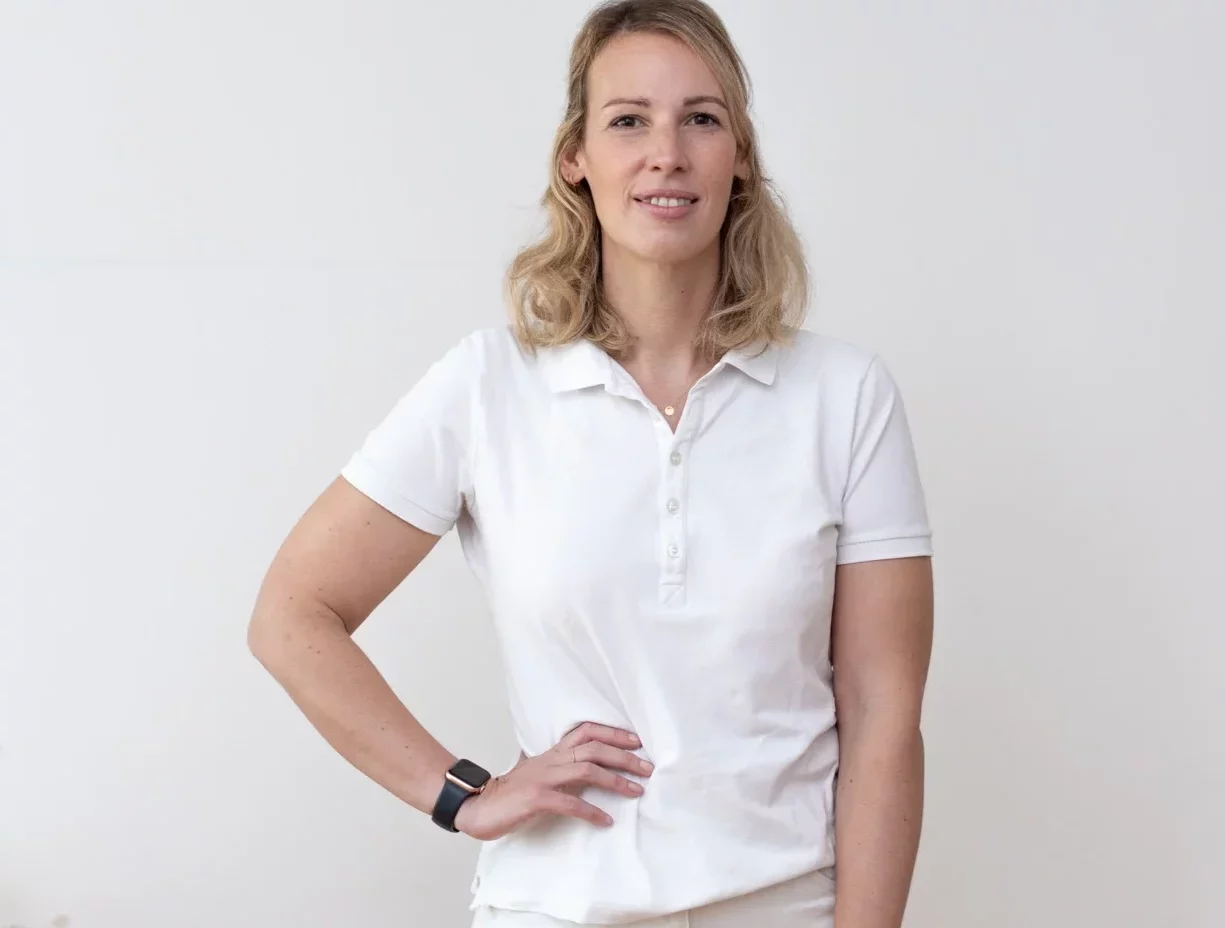My first date with a dermatologist- what to expect?
My first date with a dermatologist- what to expect? Not everyone has had a skin check with a dermatologist before. Quite often we get questions from people about what they can expect from a skin check. Should you prepare something? Do you have to get fully naked? How long will the examination take? We asked dermatologist Dr.med.univ. Amanda Zbyszewski to tell us what we can expect from a skin check
BEFORE THE EXAM
Make note of any suspicious spots ahead of the appointment. Are there moles that are new, changing, bleeding or hurting? Skin cancer arises also in areas that rarely see the light of day such as palms, finger- and toenails, your genital area, or even your eyes. Your dermatologist will take a look at these areas too. Learn the ABCDE method of recognizing skin cancer in our free browser game. Good advice: remove any nail-polish and your make-up before your examination.
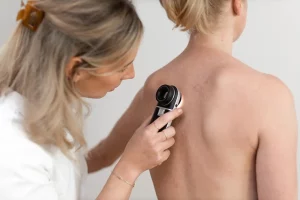
DO I HAVE TO GET UNDRESSED?
Usually your dermatologist has a specific pattern, which they use to systematically look at all of your skin. Some dermatologists do a full-body exam, including genital and perianal skin. Others address these areas only if a patient specifically requests it. I often ask patients to leave their underwear on, female patients to remove their bra. Dermatologists use a lighted magnifier, called a dermatoscope, to view moles and spots up close.
WHAT IS THE DOCTOR LOOKING FOR?
Dermatologist are specially trained in the detection and treatment of skin cancers. There are four main types: actinic keratosis, basal cell carcinoma (BCC), squamous cell carcinoma (SCC) and melanoma. Actinic keratosis is a skin change caused by sun damage that can turn into cancer without treatment. Basal and squamous cell carcinoma are the most common skin cancers, while melanoma is the most deadly. For orientation the ABCDE rule is used to identify changes that need to be clarified (Asymmetry, Border irregularity, Color variation, Diameter, evolving/ new or changing lesion). Early detection of skin cancer is the key to the treatment with the highest chance of cure. If your doctor doesn’t find anything suspicious, the exam shouldn’t take more than 15 minutes.
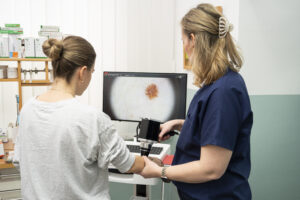
POSE FOR A PHOTO
Basically, the whole body is checked with a reflected light microscope. This enables pigmented and non-pigmented skin changes to be analyzed. In addition, moles and other spots can be digitally photographed and compared at the next check-up (usually after 3-6 months). The images can also be enlarged microscopically, so even small changes can often be recognized early on. An advanced tool for high-risk patients is mole body-mapping. It can document all the moles of the entire skin by using a special software. At the follow-up appointment, new skin changes are evaluated immediately. Photodocumentation or Body-mapping are useful tools, but it`s also not something that every patient needs, it depends on your dermatologist opinion. An experienced dermatologist can identify suspicious skin changes even without digital devices.
WHAT IF THE DOCTOR FINDS SOMETHING?
If the dermatologist finds a concerning spot on your skin, a biopsy will likely be done on the same day. A biopsy involves numbing the area with an injection of anesthesia, followed by surgical removal of the spot. The specimen will then be sent to the dermatopathologist for evaluation. Results will come back within 10-14 days. If the spot is abnormal, it may require further removal in the dermatologists office. The earlier skin cancer is discovered, the better the chances for recovery.

HOW OFTEN SHOULD I DATE MY DERMATOLOGIST?
It’s generally a good idea to visit a dermatologist once a year. If you have a family history of skin cancer, you should even go for a check-up twice a year, as you run an increased risk of developing a melanoma. Additionally, if you notice any changes to marks or spots on your skin, it’s a good idea to turn to your dermatologist. Perform regular self-examination of the skin, allowing you to quickly identify changes. And, above all else, practice safe sun habits to prevent skin cancer from developing in the first place.
“As a dermatologist, I completed my medical training at the Department of Dermatology at the Medical University of Vienna. Even though I grew up in Austria, the land of mountains, I fell in love with the oceans early on. Sun products became my best friends. The skin is our biggest organ, the only one we wear on the outside. t is the first line of defense. Your skin is worth protecting! That’s why I joined Spot The Dot
©Video and photography by Manuel Peric
Copyright ©2021 Amanda Zbyszewski
 Raising Skin Cancer Awareness- Spot The Dot
Raising Skin Cancer Awareness- Spot The Dot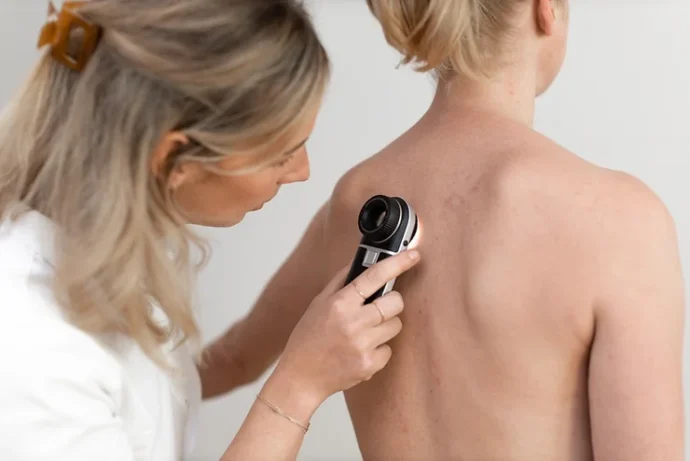 My first date with a dermatologist- what to expect? We are often asked what to expect from a preventive medical check-up?- My first date with a dermatologist- what to expect?
My first date with a dermatologist- what to expect? We are often asked what to expect from a preventive medical check-up?- My first date with a dermatologist- what to expect? Even in the cold season, we must not underestimate the power of the sun and must think about sun protection!- Sun protection in winter
Even in the cold season, we must not underestimate the power of the sun and must think about sun protection!- Sun protection in winter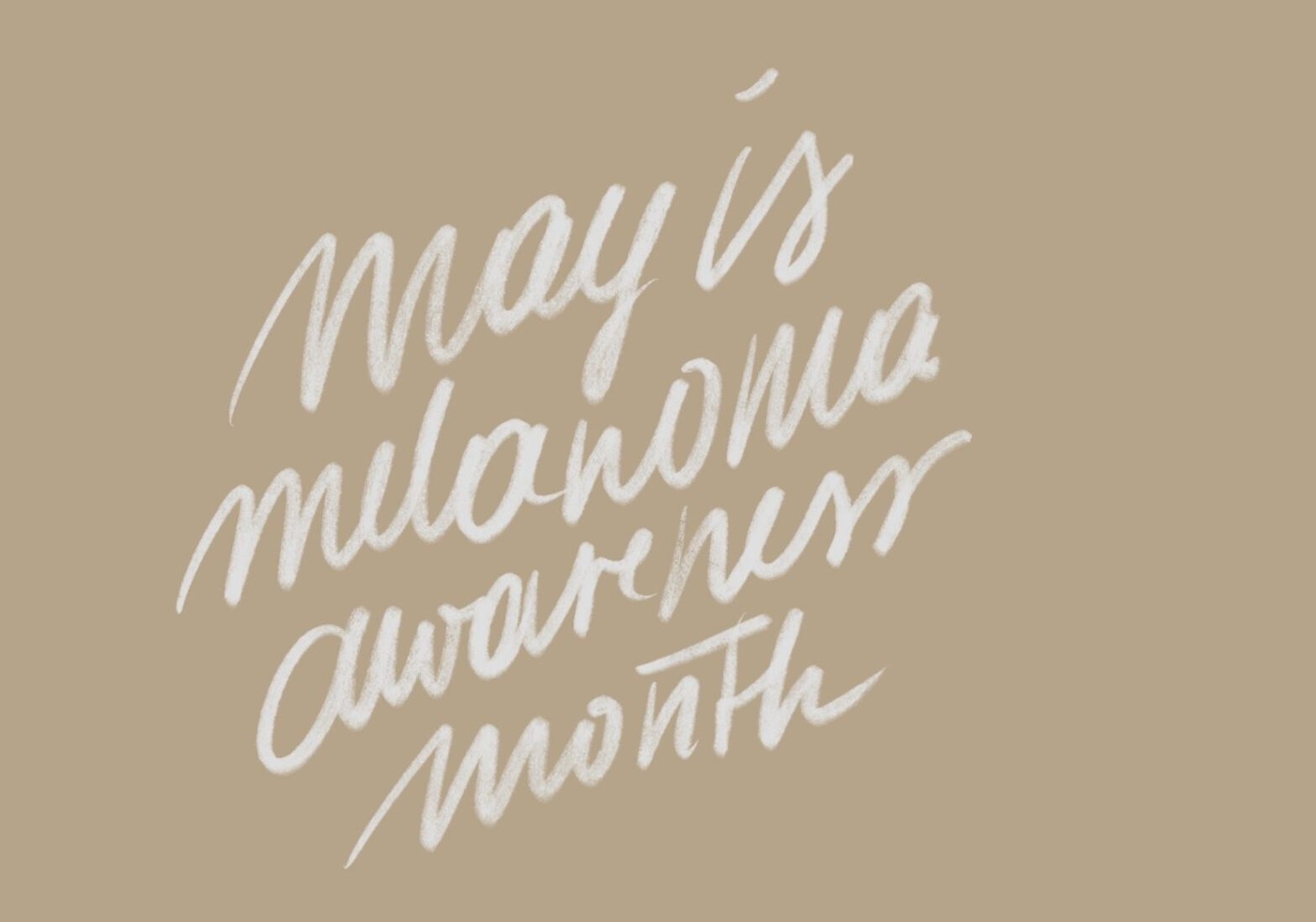 What do Bob Marley, Hugh Jackman and Khloe Kardashian have in common? That's right, everyone suffered from skin cancer!- Skin Cancer
What do Bob Marley, Hugh Jackman and Khloe Kardashian have in common? That's right, everyone suffered from skin cancer!- Skin Cancer


